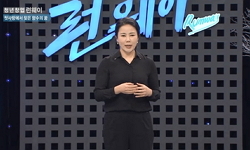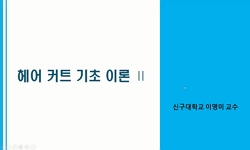구소련 고려인 디아스포라의 역사는 한국 근대사의 질곡이 가장 함축적으로 스며있는 대표적인 경우이다. 고려인 디아스포라에는 구한말 사회적 혼란과 절대 가난 속에서 연해주로 이주한 ...
http://chineseinput.net/에서 pinyin(병음)방식으로 중국어를 변환할 수 있습니다.
변환된 중국어를 복사하여 사용하시면 됩니다.
- 中文 을 입력하시려면 zhongwen을 입력하시고 space를누르시면됩니다.
- 北京 을 입력하시려면 beijing을 입력하시고 space를 누르시면 됩니다.

구소련 고려인 디아스포라 시 연구 : 양원식의 시 세계를 중심으로 = Consideration on a Korean Diaspora Poem - Focused on poem world of Wonsik Yang
한글로보기https://www.riss.kr/link?id=A82427556
- 저자
- 발행기관
- 학술지명
- 권호사항
-
발행연도
2010
-
작성언어
Korean
- 주제어
-
KDC
810
-
등재정보
KCI등재
-
자료형태
학술저널
-
수록면
489-516(28쪽)
- 제공처
-
0
상세조회 -
0
다운로드
부가정보
국문 초록 (Abstract)
구소련 고려인 디아스포라의 역사는 한국 근대사의 질곡이 가장 함축적으로 스며있는 대표적인 경우이다. 고려인 디아스포라에는 구한말 사회적 혼란과 절대 가난 속에서 연해주로 이주한 유이민의 삶, 국권 상실기 독립운동의 전진기지로서의 부침, 스탈린의 민족 강제 이주 정책에 의한 희생 등이 복합적으로 중첩되어 있다. 또한 여기에 한반도의 분단체제 이후 망명자들이 가세하면서 고려인 디아스포라에 대한 논의는 해방 이전은 물론 해방 이후의 분단시대까지 포괄되는 비극적인 한국 근대사의 중심부를 가로지르는 일이 된다.
2000년대 들어 구소련 고려인 디아스포라는 약 52만여 명에 달하는 것으로 집계되고 있다. 이들 구성원의 유형은 크게 세 부류로 나눌 수 있다. 첫째, 앞에서 개략적으로 살펴본 연해주에 살던 고려인들로 1937년 스탈린의 강제이주정책에 의해 이주된 약 20만 명의 한인과 그 후손들이다. 둘째, 일본군에 징용되었던 일본 식민통치하의 한인들과 그들의 후손으로 제 2차 세계대전 이후 사할린에 잔류되었다가 1970년대 말 구소련으로 이주한 사람들이다. 셋째, 1950년 이후 조선의 국비 장학생으로 러시아 모스크바에서 유학하던 학생들 가운데 소련으로 망명한 이후 정착한 사람들이다. 물론, 이들 부류 중 두 번째와 세 번째는 소수이고 첫 번째가 절대 다수를 이룬다.
한편, 고려인 문학의 본격적인 출발은 1923년 블라디보스톡에서 전연맹 공산당 원동변강위원회와 원동변강 직맹 소비에트 기관지인 ??선봉??이 창간되면서부터이다. 그러나 1937년 구소련지역으로의 강제 이주와 함께 ??선봉??이 폐간되고 ??레닌기치??(1938.5)에 문예페이지가 마련되면서 고려인 문학의 명맥이 면면히 이어지게 된다. 또한, ??레닌기치??는 소련의 해체와 함께 폐간(1990.12.30)되고 ??고려일보??(1991.1.1)가 창간되면서 조선 민주주의 인민공화국의 언어문화 정책을 추종하던 ??레닌기치??와는 달리 ??고려일보??의 제작방침에 상응하는 친한국적인 변화의 양상이 급격하게 일어난다. 한편, 여기에서 집중적으로 살펴보고자 하는 양원식 시인은 ??레닌기치??의 문학예술부장과 ??레닌기치??의 후신인 ??고려일보??를 직접 운영하며 구소련 고려인문학을 2000년대까지 중심부에서 선도해온 대표적인 인물이다. 그가 구소련 지역에 거주하게 된 내력은 앞에서 살펴 본 1950년 이후 조선의 국비 장학생으로 러시아 모스크바에서 유학하던 학생들 가운데 소련으로 망명해 중앙아시아 지역에 정착한 유형에 속한다. 그는 1932년 평안도 에서 태어나 유년기를 보냈으며 1953년 한국전쟁 직후 국비 유학생 자격으로 소련으로 유학하였으나 대학 졸업 후 북한으로 돌아가지 않고 망명하였다. 그는 주로 다큐멘터리 영화연출에 몰두하다가 ??레닌기치?? 문학예술부장과 ??고려일보?? 주필 겸 사장(1994∼2000)을 역임하는 등 언론인과 시인으로 활동하였다.
이 논문은 그가 간행한 한글 시집 ??카자흐스탄의 산꽃??(시와진실, 2002)을 중심으로 하여 구소련디아스포라 시의 특성을 살펴보고자 한다. 그는 구소련지역에서 한국어를 자유롭게 구사하는 얼마 되지 않은 시인 중의 한명이다. 그래서 그의 시 세계는 중앙아시아 고려인으로 살아가는 디아스포라의 정서가 능숙한 모국어를 통해 생생하게 노래되고 있는 특성을 보인다. 그의 시적 삶은 중앙아시아 강제 이주의 직접적인 당사자는 아니지만 그것이 자기 정체성의 집단적 무의식의 트라우마로 작동하고 있음을 드러내면서 동시에 현지 삶에 대한 적응과 고국에 대한 향수를 노래하는 양상을 보여준다. 그의 시적 삶에 나타나는 카자흐스탄의 아름다운 자연 경관과 조국에 대한 향수는 분열된 이중적 속성을 지닌다. 카자흐스탄의 경관이 아름답게 느껴질수록 조국에 대한 향수가 강렬하게 달아오르고 조국에 대한 향수가 강할수록 악몽과 같은 조국의 현실이 부각된다. 이것이 구소련 고려인 디아스포라의 시적 삶의 중요한 특성인 것이다.
다국어 초록 (Multilingual Abstract)
The history of former Soviet Union Korean diaspora is the representative case where ordeal of Korean modern history has pervaded full of implications. Lots of things are piled up on Korean diaspora, which are social disorder in the latter era of the C...
The history of former Soviet Union Korean diaspora is the representative case where ordeal of Korean modern history has pervaded full of implications. Lots of things are piled up on Korean diaspora, which are social disorder in the latter era of the Choson Dynasty and life of emigrants moved to village of maritime province in Russia in absolute hunger, ups and downs of life as an advance air base during independence movement in national sovereignty lost period, sacrifices by national immigration policy forced by Stalin. Also, refugees were joined after division of Korea into North and South and the discussion on Korean diaspora has become the center of tragic Korean modern history including division era after liberation as well as before liberation.
Korean diaspora in the former Soviet Union in 2000s counted about 0.52 million people. There are three types of members. First, they are the Korean lived in the village of maritime province in Russia, they are about 200 thousands Korean and their descendants moved by the forced movement policy of Stalin in 1937. Second, they are Koreans and their descendants under Japanese colonial government drafted by Japanese army and they had lived in Sakhalin after the World War Ⅱ and moved to Central Asia in the late 1970s. Third, they were students studied in Moscow, Russia as state scholarship students after 1950 and settled down in Central Asia after asylum to the Soviet Union. Of course, second and third kinds of people are minor and the first consists the most.
Meanwhile, the real beginning of Korean literature starts from the birth of ??Sunbong??, a Soviet paper of Communist Wondongbyungang committee and W ondongbyungang in Vladivostok in 1923. But ??Sunbong?? had ceased publication with forced movement to Soviet Union in 1937 and literature pages were provided in ??Lenin Banner?? (May, 1938) so that Korean literature had barely kept itself in existence. Also, ??Lenin Banner?? had ceased publication with dissolution of the Soviet Union(Dec. 30, 1990), ??Korea Ilbo??(Jan. 1, 1991) was published the first edition and there was dramatical changes in aspect of favor corresponding to publication policies of ??Korea Ilbo?? different from ??Lenin Banner?? following language culture policies of the Democratic People's Republic of Korea(DPRK).
On the one hand, the poet, Wongsik Yang, the focus of the paper was the head of culture and art department of ??Lenin Banner?? and managed ??Korea Ilbo?? after ??Lenin Banner??, and he has led Korean humanities of Central Asia until 2000s. He was one of the students studied in Moscow, Russia as state scholarship students after 1950 and settled down in Central Asia after asylum to the Soviet Union. He was born in 1932 and spent childhood in Pyongan-do, studied in the Soviet Union as a state scholarship student after Korean war in 1953, did not go back to North Korea after graduation of university and defected to the Soviet Union. He mainly immersed himself in directing for documentary movie and he was a journalist and also a poet holding various positions such as a head of culture and art department of ??Lenin Banner??, chief editor and president of ??Korea Ilbo??(1994~2000).
This paper would inspect the characteristics of the Soviet Union diaspora poem focused on Korean poem, ??Wild Flowers of Kazakhstan?? (Poem and the Truth, 2002) published by Wonsik Yang. He is one of the poet who can speak Korean fluently in the Soviet Union. So his world of poem shows the characteristics in which the emotion of diaspora living in the Central Asia as a Korean appears vividly in his poem in fluent Korean. His poem shows he is not the person directly involved in forced movement to Central Asia but it is working as a collective unconscious trauma of his identity and also he shows adaptation to live in the Central Asia and at the same time feel nostalgia for mother country. Beautiful nature of Kazakhstan and nostalgia for mother country in his poem shows divi
목차 (Table of Contents)
- 1. 서론
- 2. 구소련 고려인 문학의 형성 및 전개 과정
- 3. 고려인 디아스포라와 양가적 이중성
- 4. 디아스포라의 양가적 이중성과 한민족 문화의 발전을 위하여
- 참고문헌
- 1. 서론
- 2. 구소련 고려인 문학의 형성 및 전개 과정
- 3. 고려인 디아스포라와 양가적 이중성
- 4. 디아스포라의 양가적 이중성과 한민족 문화의 발전을 위하여
- 참고문헌
- 〈국문초록〉
- Abstract
동일학술지(권/호) 다른 논문
-
국어(조선어) 독본 수록 서간(書簡)의 존재양상과 사회적 의미
- 한국근대문학회
- 김성수(Kim Seong-su)
- 2010
- KCI등재
-
- 한국근대문학회
- 장철환(Jang Cheul-whoan)
- 2010
- KCI등재
-
- 한국근대문학회
- 장철문(Jang Cheal-mun)
- 2010
- KCI등재
-
- 한국근대문학회
- 고봉준(Ko Bong-jun)
- 2010
- KCI등재




 DBpia
DBpia






